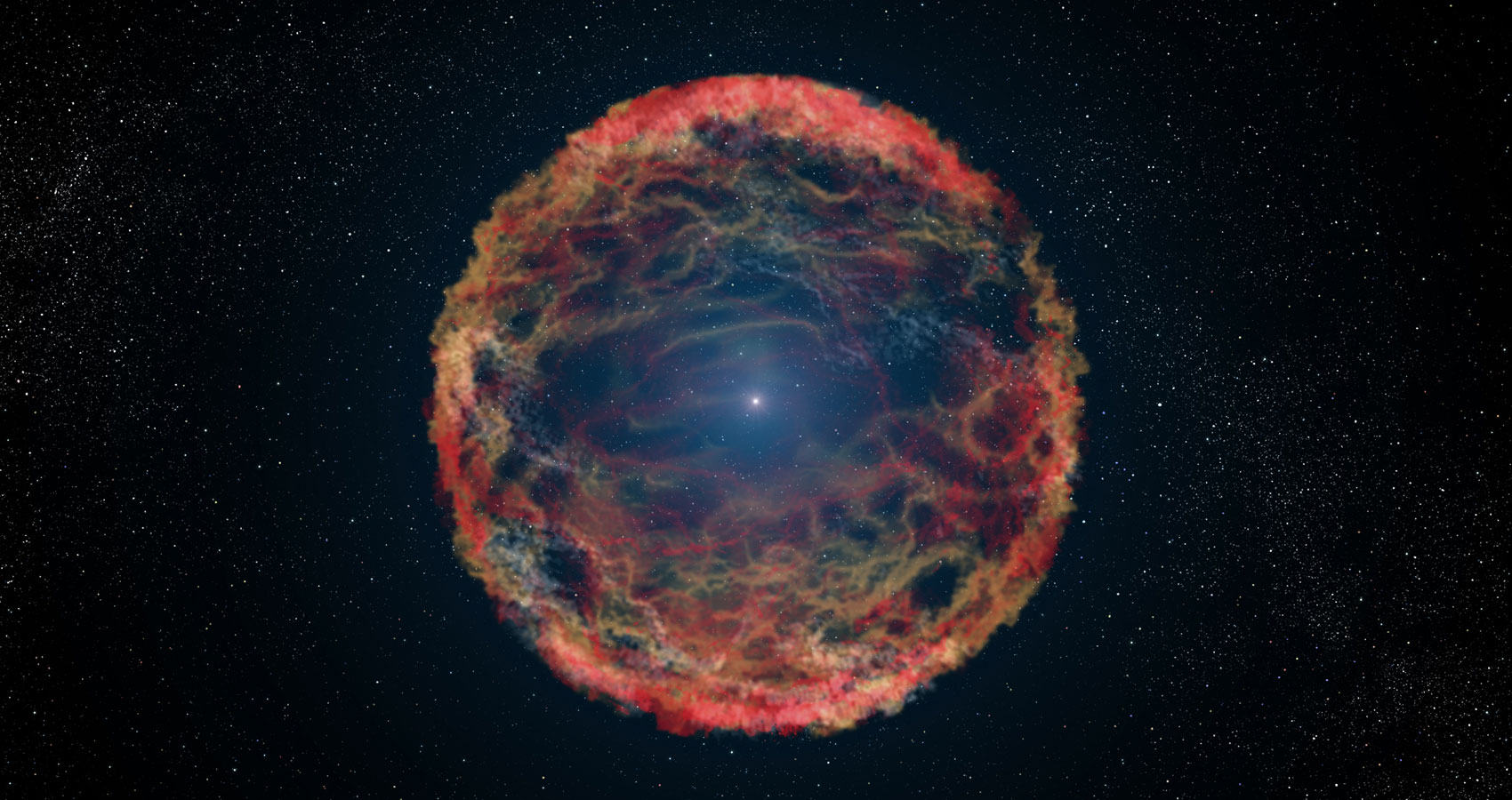Researchers have discovered an exciting new source of gravitational waves. They are the remnants left over from a supernova explosion, and they may just reveal the secrets to how those explosions work.
So far our gravitational wave detectors have only identified one kind of gravitational waves. Those are the kinds emitted by two compact objects spiraling in to crash into each other. These kinds of signals are very brief, extremely strong, and asymmetric, meaning that they are stronger in one direction than another. This makes them very easy to detect with our current generation of detectors.
Many sources generate gravitational waves throughout the universe. One of the most tantalizing are supernova explosions. We currently do not understand how stars turn themselves inside out and explode. Gravitational waves can provide a unique window into the hearts of stars as they are exploding. But these kinds of explosions are typically incredibly brief and spherically symmetric, meaning that they are outside of the range of exploration of the next generation of gravitational wave detectors.
But researchers investigating the nature of gravitational waves emitted by supernovae explosions happened upon in interesting discovery.
“When I calculated the gravitational waves from the vicinity of the black hole, I found another source disrupting my calculations — the cocoon,” said Northwestern’s Ore Gottlieb, who led a new study. “I tried to ignore it. But I found it was impossible to ignore. Then I realized the cocoon was an interesting gravitational wave source.”
The researchers found that the cocoon surrounding such explosions was a source of gravitational waves in and of itself. These cocoons are formed when jets emanating from the dying star slam into the material around it, essentially blowing a bubble around the about-to-die star.
“A jet starts deep inside of a star and then drills its way out to escape,” Gottlieb said. “It’s like when you drill a hole into a wall. The spinning drill bit hits the wall and debris spills out of the wall. The drill bit gives that material energy. Similarly, the jet punches through the star, causing the star’s material to heat up and spill out. This debris forms the hot layers of a cocoon.”
Because these cocoons are asymmetric, we can detect them with the next generation of detectors which are coming online right now. It may be possible to link the properties of these cocoons to the mechanisms that lead to the death of the star.
“As of today, LIGO has only detected gravitational waves from binary systems, but one day it will detect the first non-binary source of gravitational waves,” said Northwestern’s Ore Gottlieb, who led the study. “Cocoons are one of the first places we should look to for this type of source.”
We still can’t yet dive deep into the hearts of stars as they are going supernova, but this new source may give us a window.
“Both jets and supernovae are very energetic explosions,” Gottlieb said. “But we can only detect gravitational waves from higher frequency, asymmetrical explosions. Supernovae are rather spherical and symmetrical, so spherical explosions do not change the balanced mass distribution in the star to emit gravitational waves. Gamma-ray bursts last dozens of seconds, so the frequency is very small — lower than the frequency band that LIGO is sensitive to.”
“Our study is a call to action to the community to look at cocoons as a source of gravitational waves,” he said. “We also know cocoons to emit electromagnetic radiation, so they could be multi-messenger events. By studying them, we could learn more about what happens in the innermost part of stars, the properties of jets and their prevalence in stellar explosions.”

